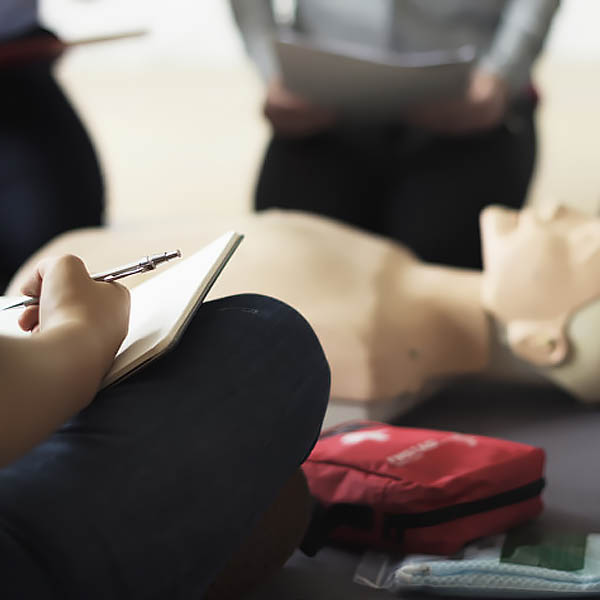

СДЕЛАЙТЕ СВОИ УРОКИ ЕЩЁ ЭФФЕКТИВНЕЕ, А ЖИЗНЬ СВОБОДНЕЕ
Благодаря готовым учебным материалам для работы в классе и дистанционно
Скидки до 50 % на комплекты
только до 12.06.2025
Готовые ключевые этапы урока всегда будут у вас под рукой
Организационный момент
Проверка знаний
Объяснение материала
Закрепление изученного
Итоги урока


The Ultimate Guide to Medical Oxygen Cylinders
In times of medical emergencies, Oxygen Cylinders play a vital role in saving lives. Whether it's for hospital use, home care, or emergency services, understanding how these cylinders work, how to choose the right one, and how to use them safely is crucial. In this comprehensive guide, we will explore everything you need to know about medical oxygen cylinders - types, usage, safety, and maintenance.
What Are Oxygen Cylinders?
Oxygen Cylinders are high-pressure vessels used to store and transport medical-grade oxygen. This oxygen is essential for patients with respiratory issues, low oxygen saturation, or other critical health conditions. These cylinders ensure a continuous supply of oxygen, especially when a patient’s lungs cannot intake or retain enough oxygen naturally.
Medical oxygen is highly purified and free from contaminants, making these cylinders vital equipment in hospitals, ambulances, clinics, and home healthcare settings.
Types of Medical Oxygen Cylinders
There are several types of oxygen cylinders available, and they vary in size, material, and purpose. The main types include:
1. Portable Oxygen Cylinders
These are lightweight and easy to carry, ideal for home use or short-term emergency situations. Portable cylinders are often used by elderly patients or individuals with chronic respiratory diseases like COPD.
2. Compressed Gas Cylinders
These cylinders store oxygen in a highly compressed form. They are typically made of aluminum or steel and come in different sizes (A, B, C, D, E, etc.). Compressed cylinders are common in hospitals and ambulances.
3. Liquid Oxygen Cylinders
These store oxygen in liquid form at extremely low temperatures. When released, the liquid turns into gas. These cylinders are highly efficient and used when a larger, more continuous supply of oxygen is needed.
4. Home Oxygen Tanks
Home-based oxygen cylinders are designed for long-term therapy and are connected with flow meters, humidifiers, and nasal cannulas for comfortable delivery.
How Do Oxygen Cylinders Work?
An releases oxygen through a regulator, which controls the pressure and flow rate. The oxygen is then delivered to the patient via a mask, nasal cannula, or oxygen concentrator. The flow rate, measured in liters per minute (LPM), is set depending on the patient’s condition and doctor’s recommendation.
Most cylinders come with gauges to indicate the amount of oxygen left. Once the pressure drops below a certain point, the cylinder needs to be refilled or replaced.
Choosing the Right Oxygen Cylinder
Selecting the right depends on several factors:
-
Medical Condition: Acute vs. chronic respiratory needs.
-
Usage Frequency: Daily therapy vs. emergency use.
-
Mobility: Portable cylinders are ideal for active users.
-
Capacity: Larger cylinders offer longer oxygen supply but are heavier.
-
Duration: How long the cylinder will last at a specific flow rate.
Always consult a medical professional before purchasing or renting an oxygen cylinder to ensure it meets the patient’s needs.
Safety Tips for Using Oxygen Cylinders
Since oxygen is highly flammable, proper usage and storage are critical. Here are essential safety tips:
-
Never smoke near oxygen cylinders.
-
Keep cylinders away from open flames and heat sources.
-
Store upright and secure to prevent tipping.
-
Use only approved regulators and accessories.
-
Check for leaks regularly using soapy water (not a flame).
-
Turn off the valve when not in use.
-
Do not attempt to repair a damaged cylinder yourself.
How to Refill and Maintain Oxygen Cylinders
Refilling an oxygen cylinder should only be done by certified professionals or at authorized facilities. Most hospitals or medical supply companies offer refill or exchange services.
Maintenance Tips:
-
Inspect for rust, dents, or damage.
-
Clean the outlet valve and connections.
-
Ensure the regulator is functioning properly.
-
Check the expiration date of the cylinder.
Proper maintenance prolongs the life of your oxygen cylinder and ensures it functions safely.
Benefits of Using Medical Oxygen Cylinders
-
Immediate oxygen supply during emergencies
-
Portable options for home care
-
High purity suitable for medical use
-
Life-saving in respiratory failure or hypoxia
-
Support for chronic conditions like COPD or asthma
Oxygen cylinders are indispensable in healthcare settings and often the first line of treatment in critical care.
Where to Buy or Rent Oxygen Cylinders
Oxygen Cylinders can be purchased or rented from:
-
Medical equipment suppliers
-
Hospitals and healthcare facilities
-
Online medical supply stores
-
Local pharmacies (in some regions)
Always ensure that you are buying from a certified dealer and that the cylinder complies with health and safety regulations.
Legal and Regulatory Guidelines
Medical Oxygen Cylinders are classified as prescription equipment in many countries. This means:
-
A doctor’s prescription may be required.
-
They must meet ISO or FDA standards.
-
Refilling must be handled by licensed technicians.
-
Safety inspections are periodically required.
Failing to adhere to these regulations can result in serious penalties or health hazards.
Oxygen Cylinder Accessories You Might Need
To enhance the functionality and comfort of oxygen therapy, several accessories are commonly used:
-
Regulators and flow meters
-
Oxygen masks or nasal cannulas
-
Humidifiers
-
Cylinder carts or trolleys
-
Protective valve caps and covers
These accessories help ensure safe and effective oxygen delivery.
Conclusion
Medical Oxygen Cylinders are a critical tool in healthcare, providing life-saving oxygen to patients who need it most. From hospital emergencies to in-home respiratory support, understanding how they work and how to use them safely is essential. By selecting the right type, following proper safety procedures, and ensuring regular maintenance, oxygen cylinders can offer reliable support for a variety of medical conditions.
If you or a loved one requires supplemental oxygen, consult with your healthcare provider to determine the best type and size of oxygen cylinder for your needs. With proper usage and care, these cylinders can dramatically improve the quality of life and ensure rapid support in emergencies.









